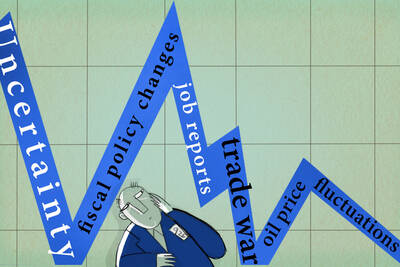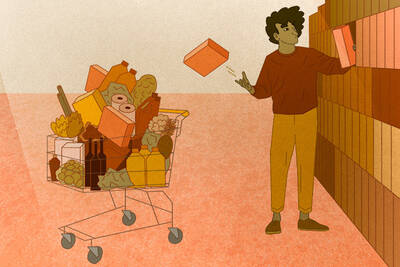It is rare that an economist has the opportunity to influence large-scale government spending and then study the outcome, but that is exactly what happened to Jonathan A. Parker, a professor of Finance at the Kellogg School of Management. In 2005 Parker collaborated on a study of the income tax rebates of 2001, which were implemented by policymakers in an attempt to jump-start a U.S. economy left moribund by the vaporization of trillions in paper wealth by the burst of the Internet bubble. Policymakers, including Ben Bernanke and Henry Paulson, all but cited Parker’s 2005 work in discussing the merits of the economic stimulus package of 2008, which in turn gave Parker a new research opportunity.
Parker’s analysis of 2008’s historic $100-billion stimulus package answers a basic question directly relevant to current and future recessions: Did individuals spend their economic stimulus checks, and if so, how? The stimulus was undertaken in spring 2008, a time when, according to Parker, the developing economic recession looked to be no more severe than the recession of 2001. Influenced in part on the rebound that followed the tax cuts of 2001, policymakers believed that this new stimulus would be enough to stem the crisis. But then the banking crisis hit.
Spenders, not Savers
That the 2008 stimulus was not enough to avoid a deep recession is self-evident, but that does not mean, as Parker discovered, that it did not meet its stated goal of boosting consumer spending.
“Our paper finds the stimulus did contribute significantly to maintaining consumer demand through the summer of 2008,” says Parker.
On average, households spent half the amount of each stimulus check within the same quarter that it was received. (The average amount for each check was $950.) Between 12 and 31 percent of the stimulus checks went to purchase non-durable goods, with the difference, which varied by household, going to durable goods, primarily automobiles.
“This shows that the stimulus did a lot to maintain auto demand through 2008 as credit markets were drying up,” notes Parker.
Automobiles are almost a kind of savings, observes Parker, because they tend to last a long time, and therefore represent something their owners will not have to buy again for some time.
While most Americans surveyed spent a significant portion of their stimulus checks, the proportion varied by category of household. Lower-income households and homeowners spent a larger percentage of their checks than higher-income households. Parker hypothesizes that the stimulus checks were more of a financial relief to homeowners who were seeing declines in housing prices and might have recently lost a home equity line of credit—and therefore had cut back more sharply on spending than renters.
A Fortuitous Natural Experiment
In order to uncover the results of the 2008 stimulus package, of which the preceding represents only the headline findings, Parker and his collaborators, Nicholas S. Souleles, a professor at the University of Pennsylvania; David S. Johnson, a chief at the U.S. Census Bureau; and Robert McClelland, a division chief at the Bureau of Labor Statistics, exploited the random way in which stimulus payments were distributed across time. The payments were disbursed over a period of weeks, according to the first and last digit of a given taxpayer’s social security number. This meant the timing of the arrival of the stimulus payment was essentially random, because social security numbers are given out sequentially.
The result was something that resembles the rigorous design of a classical medical experiment, “where some people are treated early and others late,” says Parker.
Parker and his colleagues were able to measure the results of this “natural experiment” by directly comparing reported spending to the arrival of a stimulus check. Parker’s colleagues at the Bureau of Labor Statistics (BLS) appended questions about whether an interviewee had received a stimulus payment to the Consumer Expenditure Survey, which is conducted regularly by the U.S. Census Bureau for the BLS and is used to track the spending of thousands of U.S. households in order to construct the Consumer Price Index. In contrast, many previous studies relied instead on recipients to self-report their stimulus spending, a method that people can misunderstand. For example, people might report that they used the check to pay down debt, but then turn around and spend it on consumer goods shortly thereafter. Parker and colleagues also asked questions of this type in their study, allowing them to test whether or not self-reporting of expenditures of stimulus payments is an adequate proxy for more direct measures. It turns out that self-reports are quite informative.
Upending Old Models
“Most models for evaluating fiscal policy would not have spending effects like we find,” says Parker. While a single study is rarely enough to convince an entire field of experts, this one at least presents a forceful argument against two existing, widely used theories about how stimulus spending by governments might or might not work. The first theory holds that consumers might receive a stimulus check and, rather than spending it all at once, decide to spread it over a period of a year, reasoning that it is better to raise their average standard of living for a longer period—but too lengthy to provide a single concentrated bolus of stimulus to the economy. The second argues that taxpayers might recognize that in the future they will end up paying for a fiscal stimulus anyway in the form of increased taxes, and would therefore save stimulus checks rather than spend them.
Based on his research, Parker now believes that many economic models have been “producing misleading estimates of the impact of a policy like this on the economy. So now economists are trying to build models that evaluate policies using models in which this spending effect would be found.”
Productive Stimulus
Despite his finding that the 2008 stimulus accomplished its stated goal, Parker does not believe that this method of stimulus is necessarily an optimal policy tool for use in times of economic downturn.
“While [cash payments] seem to be a reasonably effective way to get people to spend money now rather than later, the other foot hasn’t dropped yet,” says Parker. That other foot is the high debt levels that have politicians scrambling and, in some countries, protesters taking to the streets. Paying off that debt will ultimately require higher taxes, which creates an “economic headwind” that Parker believes will ultimately slow the economy.
“It would be nice to spend in a recession in a way that provides incentives for productive economic activity, such as working, hiring, or human or physical capital investment,” suggests Parker, who has already delivered a briefing on this paper to the staff of the Federal Reserve Board of Governors. If future policymakers are as interested in his current work as they were in his 2005 paper on the 2001 stimulus package, Parker might just get the chance to study the future effects of policies more in line with his own views on sound financial stimulus.
Parker, Jonathan A., Nicholas S. Souleles, David S. Johnson, Robert McClelland. 2010. “Consumer spending and the economic stimulus payments of 2008.” Working paper, Kellogg School of Management.


